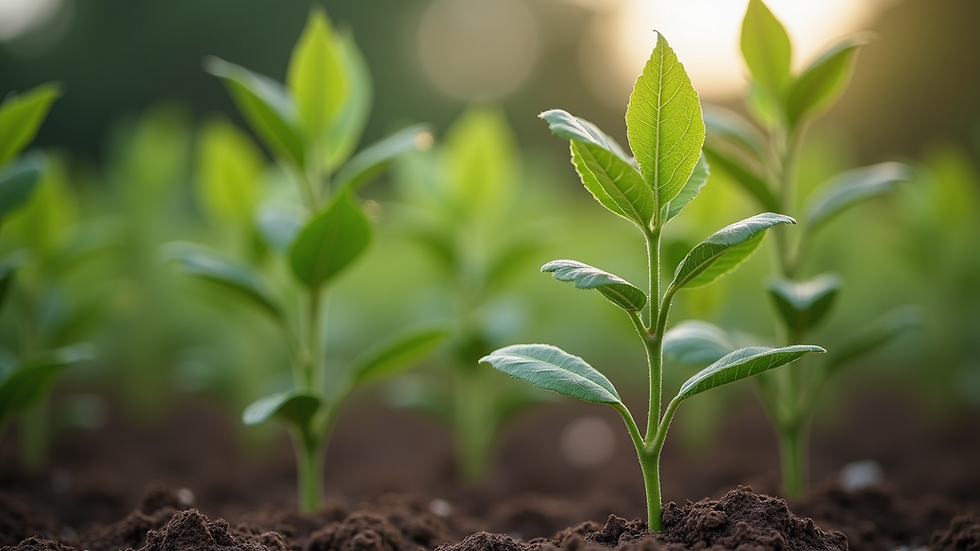Sustainable Practices in Teak Wood Production
- alijah47
- Jun 23
- 4 min read
Teak wood is one of the most sought-after hardwoods in the world, known for its durability, water resistance, and natural beauty. However, as deforestation and environmental degradation become increasingly urgent issues, the need for sustainable practices in teak wood production is paramount. In this blog post, we will explore effective sustainable practices in teak wood cultivation, harvesting, and processing that not only benefit the environment but also preserve this precious resource for future generations.
Sustainable Teak: The Need for Responsibility
Teak lumber faces several environmental challenges. Overharvesting and poor management can lead to significant ecological damage, loss of biodiversity, and soil erosion. As a result, sustainable practices in teak production are not just optional; they are essential for maintaining the balance of our ecosystems.
According to the United Nations Food and Agriculture Organization (FAO), about 37% of the world's forests are classified as being managed sustainably. However, the teak sector has a long way to go.

The Benefits of Sustainable Teak Production
Implementing sustainable practices in teak wood production comes with numerous benefits:
Environmental Protection: Sustainable forestry helps maintain ecological balance by preventing deforestation, protecting wildlife habitats, and ensuring soil health.
Economic Stability: By promoting responsible harvesting methods and labor practices, local communities benefit through improved livelihoods and job opportunities.
Quality Assurance: Sustainably harvested teak is often of higher quality due to enforced regulations that emphasize selecting older trees and allowing for natural regeneration.
Conservation of Resources: By prioritizing sustainable practices, the timber industry can minimize waste and promote the efficient use of natural resources.
Key Sustainable Practices in Teak Cultivation
Agroforestry Techniques
One effective method of sustainable teak production is agroforestry. This approach integrates teak cultivation with other agricultural practices. Farmers plant teak trees alongside food crops, thus maximizing the land use and enhancing biodiversity.
For example, a study by the World Agroforestry Centre highlights that integrating teak with various food crops can lead to increased yields for farmers and healthier ecosystems. This practice ensures that local flora and fauna can thrive, contributing positively to environmental health.

Responsible Harvesting Practices
Sustainable teak wood production relies heavily on responsible harvesting practices. This includes selective logging, where only mature trees are removed, allowing younger trees to grow and regenerate the forest. Techniques like reduced impact logging (RIL) minimize damage to the surrounding ecosystem during the harvesting process.
Evidence from sustainable forestry initiatives shows that implementing responsible logging techniques can reduce forest degradation and preserve biodiversity. Research indicates that selective logging can improve the overall health of a forest, as it allows for greater regeneration and resilience against pests and diseases.
Certification Standards
Sustainable certification programs, like the Forest Stewardship Council (FSC) and the Programme for the Endorsement of Forest Certification (PEFC), ensure that teak wood is harvested and processed according to strict environmental standards.
Obtaining these certifications guarantees consumers that the products they buy support sustainably managed forests. Companies like diamond teak often seek these certifications to demonstrate their commitment to responsible forest management and conservation efforts.
Reforestation and Afforestation
Another critical aspect of sustainable teak production is reforestation and afforestation. This involves planting new teak trees to replace those that have been harvested and establishing teak plantations in areas previously devoid of forests.
Organizations like the World Wildlife Fund advocate for such initiatives as they help restore the ecological balance and provide additional timber resources in the future. Statistics show that targeted reforestation can increase forest cover in degraded areas by as much as 50%, benefiting both the environment and local communities.

Community Involvement and Education
Sustainable practices in teak wood production do not solely rely on technical approaches; community involvement is equally vital. Education and engagement with local communities encourage sustainable forestry practices and ensure that local populations can actively participate in decision-making processes regarding forest management.
For instance, community workshops focusing on sustainable agriculture, forestry techniques, and environmental conservation can dramatically improve local understanding of and commitment to sustainable practices. Case studies demonstrate that communities actively engaged in sustainable practices often report higher levels of biodiversity and economic prosperity.
Transparency in Supply Chains
As consumers become more aware of the environmental impact of their purchases, the importance of transparency in supply chains cannot be overstated. Sustainable teak producers should openly share information about their sourcing, harvesting, and processing methods. Doing so fosters accountability and trust with consumers.
Moreover, technology can help enhance transparency. Blockchain technology, for example, can enable tracking of teak wood from the forest to the final product, ensuring that every piece of wood is sourced sustainably.
The Future of Sustainable Teak Production
The road to sustainable teak wood production is paved with challenges but also opportunities. As global demand for teak continues to rise, it is crucial for producers, consumers, and policymakers to work collaboratively towards sustainable solutions.
Investing in research and innovative technologies for sustainable practices, educating communities, and embracing eco-friendly certification systems can collectively contribute to a sustainable future for teak.
Embracing Sustainability Together
In conclusion, sustainable practices in teak wood production are vital for protecting our forests and the ecosystems they support. By adopting responsible techniques, supporting community involvement, and prioritizing transparency, the teak industry can thrive without compromising the environment.
Together, we can ensure that future generations will enjoy the beauty and benefits of sustainably sourced teak wood. It is a shared responsibility that we must embrace, not only for ourselves but for the planet we call home.
By choosing sustainably sourced teak like that offered by diamond teak, consumers are making a conscious decision to support environmental conservation and ethical business practices. Let us strive to contribute to a sustainable future for teak and the planet.




Comments